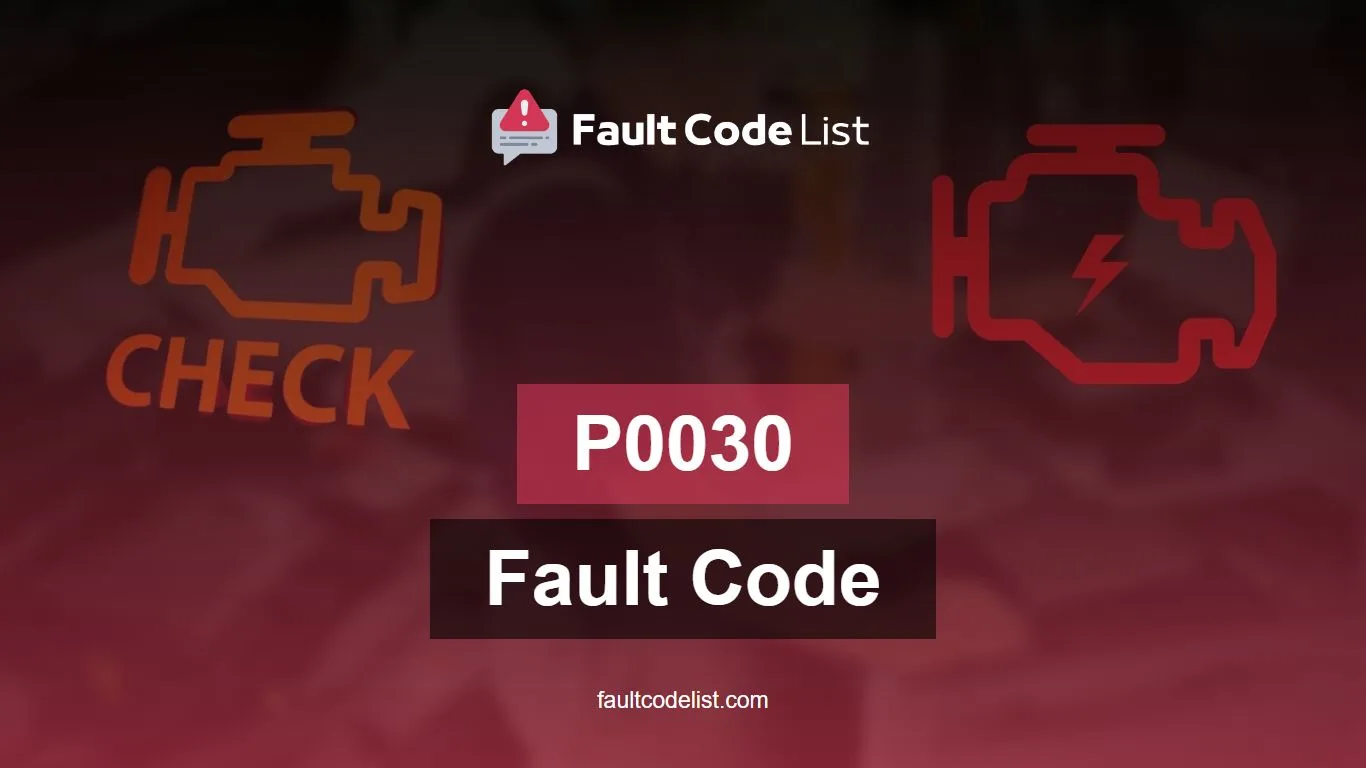When your vehicle’s check engine light turns on, and you find out it’s due to fault code P0030, it’s related to the HO2S (Heated Oxygen Sensor) Heater Control Circuit for Bank 1 Sensor 1. This specific code is an essential one as it points towards an issue with the heating element of the oxygen sensor located in bank 1, sensor 1 position of your vehicle’s engine.
The purpose of the heated element in an oxygen sensor is to help the sensor reach its optimal working temperature more quickly, which is crucial for the engine’s control system to adjust the air-fuel mixture properly and maintain efficient operation.

The appearance of the P0030 code can be a sign that your engine is not running as efficiently as it should. This fault can lead to increased emissions, decreased fuel economy, and in some cases, a noticeable decrease in the performance of your vehicle. Understanding the symptoms, reasons, and solutions for this code is essential for any vehicle owner or technician to ensure the longevity and efficiency of the vehicle’s engine.
What are the symptoms of code P0030?
The symptoms of the P0030 fault code can vary depending on the severity of the issue and the vehicle’s make and model. However, there are common signs that vehicle owners and technicians can look out for:
- Check Engine Light: The most obvious and common symptom is the illumination of the check engine light on your dashboard.
- Poor Fuel Economy: Since the oxygen sensor plays a crucial role in fuel management, a malfunction can lead to less efficient fuel use.
- Rough Idling or Engine Misfires: Faulty oxygen sensor readings can disturb the air-fuel mixture, causing the engine to idle roughly or misfire.
What are the reasons for the P0030 code?
The P0030 fault code can be triggered by a few different issues, making troubleshooting important to pinpoint the exact cause. Here are some of the most common reasons:
- Faulty Oxygen Sensor: The sensor itself might be damaged or malfunctioning.
- Wiring Issues: Damaged or frayed wires leading to the sensor can disrupt its operation.
- Bad Fuse or Relay: The fuse or relay that provides power to the sensor’s heater circuit may have blown or malfunctioned.
What is the solution of code P0030?
Addressing a P0030 code involves a series of steps to diagnose and fix the underlying issue. Here’s a general approach to resolving the problem:
- Diagnostic Verification: Start with verifying the code with an OBD-II scanner, then clear the code and see if it returns to confirm the issue.
- Inspect Wiring and Connectors: Check for visible signs of damage to the wiring and connectors leading to the oxygen sensor. Repair or replace as necessary.
- Replace Oxygen Sensor: If the wiring is intact, the problem may lie with the sensor itself. Replacing the oxygen sensor is often a necessary step.
Summary
The P0030 code is a sign that there’s an issue with the HO2S Heater Control Circuit in Bank 1 Sensor 1 of your vehicle. It’s a problem that shouldn’t be ignored, as it can affect the vehicle’s performance and fuel efficiency. By understanding the symptoms, possible causes, and solutions for this fault code, vehicle owners and technicians can take the necessary steps to ensure the vehicle returns to its optimal running condition.
Addressing the code promptly can help avoid further complications and ensure that your vehicle remains efficient and environmentally friendly. Always consider consulting a professional mechanic if you’re unsure about diagnosing or fixing the issue yourself. With the right approach, resolving a P0030 code can be straightforward, ensuring your vehicle continues to run smoothly.
